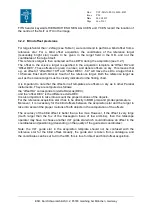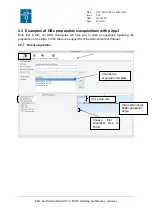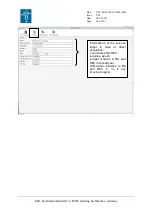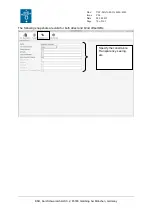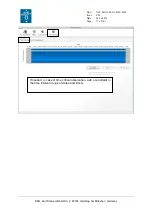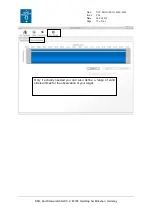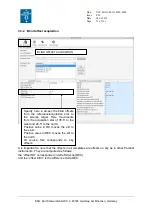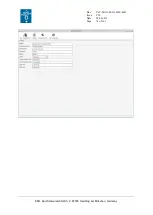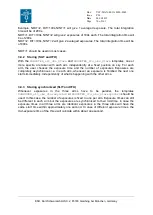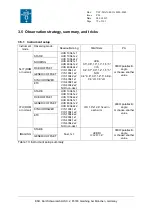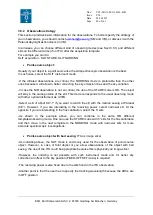
Doc:
Issue
Date
Page
VLT-MAN-ESO-14650-4942
P96
24.06.2015
80 of 161
ESO, Karl-Schwarzschild-Str. 2, 85748 Garching bei München, Germany
3.5.2 Observation strategy
This section provides basic information for the observations. To better specify the strategy of
your observations, you should contact
(SM and VM), or discuss it with the
Paranal day/night astronomers (in VM).
In all cases, you can choose different kind of observing modes (see Sect.3.5.1) and different
slits on the different arms (if no IFU) after the acquisition template.
For example you can do:
SLIT acquisition - SLIT STARE- SLIT NODDING
Point-source object:
Usually if your object is a point source-like the slit spectroscopic observation is the best.
In such case, select the SLIT instrument mode.
-If the infrared observations are critical, the NODDING mode is preferable than the other
ones because it will allow to better correcting the sky emission lines and the sky variation.
-In case the NIR observation is not so critical, the use of the STARE mode is OK. The object
will stay in the same position of the slit. This mode corresponds to the usual observing mode
with other optical instrument as UVES.
-Select a slit of about 0.9”-1” if you want to match the slit with the median seeing at Paranal
(0.8”). However, if you are interesting in the resolving power, select narrower slit. At the
opposite if you are interesting in the flux calibration, select the 5” slits.
-As shown in the example above, you can combine in the same OB different
templates/observing mode. One can use the STARE mode with 5” slits for the flux calibration
and then move in the next template to the NODDING mode with narrower slits for more
accurate spectroscopic investigations.
Point-source object with bad seeing:
IFU as image slicer
-As indicating above, the SLIT mode is commonly used for the observation of point source
object. However, in case of faint object or you allow observations of the object with bad
seeing, the use of the IFU could be appropriate because this is physically an image-slicer.
-However, the nodding is not possible with such instrument mode and for better sky
correction an offset to the sky position (FIXED-OFFSET mode) is required.
-The resolving power is also fixed due to the slits fixed in the IFU observation.
-Another point is that the user has to specify the tracking wavelength because the ADCs are
in OFF position.

